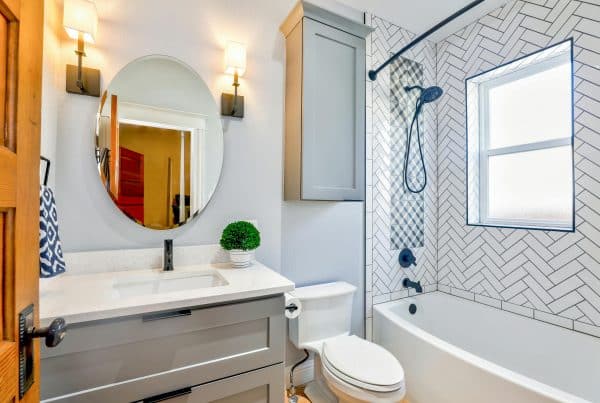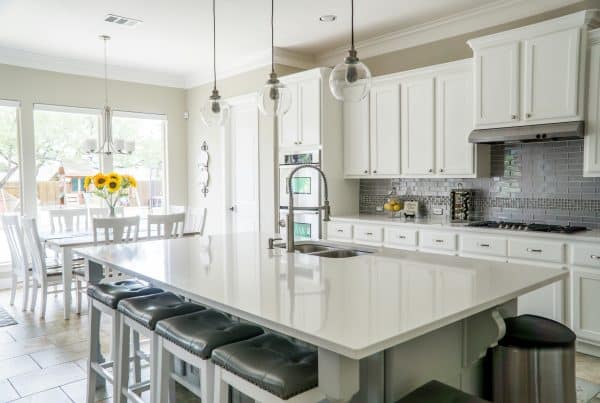Why Your Las Vegas Home Isn’t Selling: The Real Reasons (And It’s Not the Market)
Your house has been sitting on the market for months. Showings are few and far between. Your agent keeps blaming “market conditions,” but here’s the truth: the Las Vegas real estate market isn’t your problem.
With over 8,000 homes sold and $2 billion in transactions, we’ve seen this story play out hundreds of times. The market is working fine for properly positioned properties.
The Number One Reason Your Home Isn’t Selling
It’s your price. Period.
We see this pattern constantly in Las Vegas. A seller wants $650,000 for a house that should list at $600,000. The agent says “we’ll give it a shot” instead of having the hard conversation upfront.
Here’s what happens next:
Month 1: Listed at $650K, zero serious looks
Month 2: Drop to $635K, still nothing
Month 4: Down to $625K, market keeps declining
Month 6: Finally at $600K, but now the house is stale
The real kicker? In our current market conditions, properties lose value while sitting. With inventory at 10,520 active listings and only 2,614 sales in the last 30 days, every day costs you money. If the market drops 1% monthly and your home is worth $600,000, you’re losing $200 per day by overpricing.
One client learned this lesson the hard way. After six months of chasing the market down from $650K to $600K, we had to have the uncomfortable conversation: “List at $600K now or wait until January, because you didn’t listen to pricing advice.”
The bottom line: Price reductions are matching new listings every week in Las Vegas. If you’re seeing 1,400 new listings and 1,450 price reductions weekly, the message is clear.
Buyers Don’t Care About Your Renovation Costs
You spent $50,000 on that kitchen remodel. Buyers see it as “a kitchen.”
This is where seller emotions crash into buyer logic. Buyers shop based on value and comparable sales, not your emotional attachment to upgrades. They don’t care that you invested $300,000 in renovations if similar homes without those upgrades sell for the same price.
We recently showed clients a property where the sellers clearly spent big money on upgrades but priced themselves 20% above comparable sales. The buyers walked away because three other similar properties were available at market price.
In a buyer’s market, everyone wants a deal. They don’t want to pay market value, much less a premium for your personal taste in finishes.
Here’s the pricing reality we used recently: Condos in a specific Las Vegas complex were listing between $180K-$190K. Recent sales showed $175K and $185K depending on condition. Properties at $188K-$190K weren’t selling because buyers had multiple choices.
We listed our flip at $170K. Sold immediately with multiple offers.
Photos and Presentation Kill More Sales Than You Think
99% of buyers start their search online. Your photos are your first impression, and bad photos will eliminate you before anyone steps foot in your property.
We can get buyers into an unattractive house with great photography. We’ve also seen beautiful homes sit on the market because of terrible online presentation.
The photo quality test: Can you make a really bad house look appealing through photography? Yes. Can you make a good house look horrible? Absolutely.
Dark photos, cluttered rooms, and poor lighting are deal killers. Buyers are scrolling through dozens of properties on their phones. One mediocre photo and they’re moving to the next option.
During showings, smell matters more than you realize. Cigarette odors immediately eliminate non-smoking buyers. Pet smells require professional treatment before listing. We recommend natural oils (lavender, peppermint) instead of chemical air fresheners that scream “we’re hiding something.”
The maintenance indicator buyers use: Walk straight to the air vents. Clean, maintained vents signal a meticulous homeowner who handles regular maintenance. Dirty, unchanged vents suggest deferred maintenance throughout the property.
You’re Ignoring Critical Feedback
When three separate buyer agents mention the same issue, that’s not coincidence. That’s your house telling you why it won’t sell.
Act on repetitive feedback immediately. If multiple showings mention odors, address them. If buyers consistently mention condition issues you can fix, fix them within days, not weeks.
Some feedback you can’t address (small lot, commercial backing, busy street), but changeable problems should be handled like emergencies.
We had one property where every showing mentioned the same smell issue. The seller ignored it for two months, then wondered why no offers came in. Once addressed, the house sold within three weeks.
Your Agent May Not Be Aggressive Enough
Part-time agents work fine in rising markets. In our current Las Vegas conditions with 18,000+ agents competing for business, you need full-time professionals with systems.
What professional teams provide:
Weekly strategy meetings discussing every listing
Dedicated marketing staff (our marketing director has 19 years experience)
Phone scripts and training for lead handling
Database marketing to 120,000+ contacts
Cross-promotion within 900-agent network
The difference shows in results. Teams ranked consistently in the top 10 statewide handle market shifts differently than individual agents juggling part-time schedules.
Professional phone handling example: Instead of “Hello, Bob here,” trained agents answer: “Aaron Taylor here with the real estate guys. How can we help you? How long have you been looking? What’s your situation?”
Strategy meetings matter. Every Wednesday, our listing team reviews each property’s performance, discusses market conditions by area, and adjusts tactics. Individual agents don’t have this collaborative advantage.
Sellers Wait Too Long to Make Adjustments
If you insist on pricing above market, create an aggressive adjustment timeline upfront.
The 30-45 day rule: If starting above comparable sales, plan to reach market value within 45 days maximum. Drop the price every 15 days until you hit realistic pricing.
Market psychology works against delayed adjustments. A house sitting 90 days at the same price signals two things to buyers: stubborn seller who won’t negotiate, and overpriced property.
Compare these messages to buyers:
House #1: Listed 90 days ago at $600K, still $600K
House #2: Listed 90 days ago at $670K, now $630K with planned drops
House #2 signals motivated sellers who want their property sold. House #1 suggests sellers who don’t really need to move.
Create urgency. Every day your home sits reduces your negotiating power. Buyers see days on market and adjust their offers accordingly.
Modern Buyers Are Too Smart to Fool
Zillow, Redfin, and other platforms give buyers instant access to comparable sales data. They’re walking into showings with recent sale prices already researched.
Sharp lenders provide buyers with detailed market analysis showing exactly what similar properties sold for in recent months. If your home is overpriced, buyers know it before the showing starts.
The abundance of choice factor: With over 10,500 active listings in Las Vegas, overpriced properties get eliminated quickly. Buyers can find three similar properties within their budget rather than negotiating on one that’s too expensive.
Negotiation reality: The most important skill we bring to sellers is negotiation expertise. The same applies to buyer representation. In markets with multiple options, negotiation skills determine final sale prices.
Key Takeaways
Price correctly from day one – The market isn’t your problem, expectations are
Address feedback immediately – Repetitive showing comments require instant action
Professional photography matters – 99% of buyers start online
Use experienced, full-time agents – Part-time agents work in rising markets, not current conditions
Create adjustment timelines – If pricing above market, plan aggressive drops
Monitor days on market – Every day reduces negotiating power
Professional teams outperform – Strategy meetings and collaborative approaches sell properties faster






